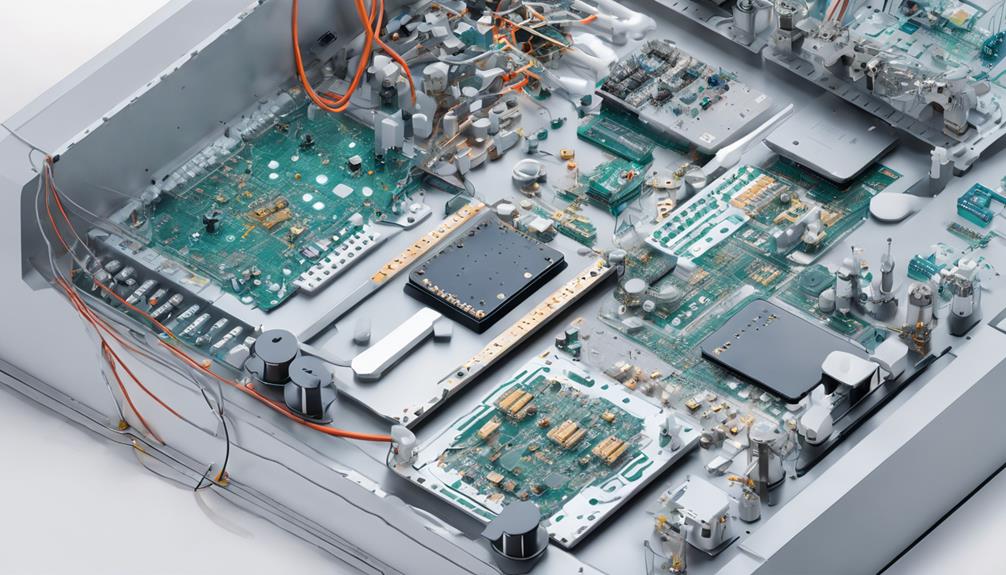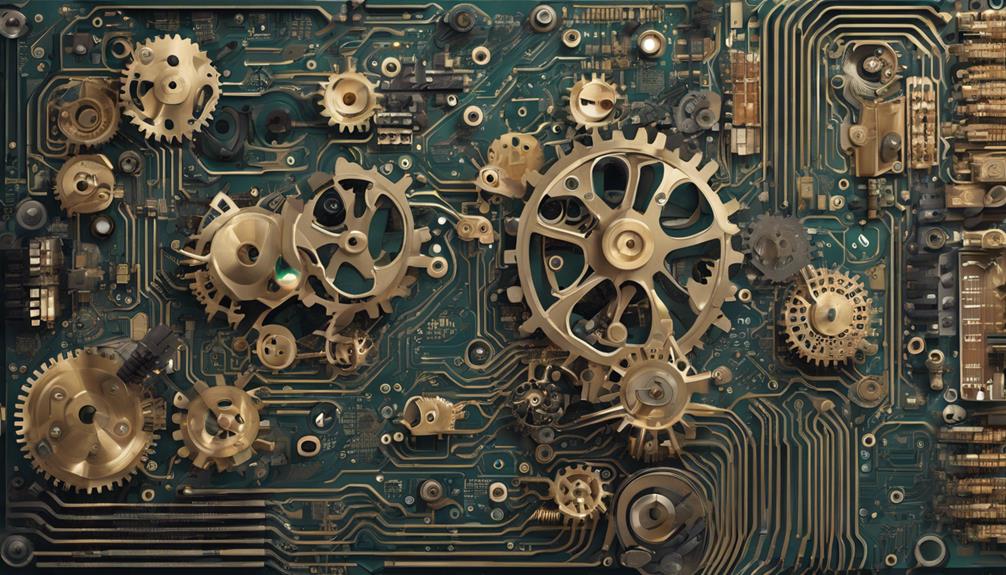The manufacturing cost of High-Density Interconnect (HDI) boards is a complex function of multiple factors, including yield, material selection, via formation, plating methods, drilling techniques, layer count, and lamination complexity. These factors interact to impact production expenses, with via hole formation, material quality, and plating methods playing vital roles. Drilling techniques, layer count, and lamination complexity also greatly contribute to manufacturing costs. Understanding the intricate relationships between these factors is essential for optimizing production and minimizing expenses. As the nuances of HDI board manufacturing become clearer, the path to cost-effective production begins to unfold.
Key Takeaways
- Yield, installed cost, via quality, plating methods, and drilling methods significantly impact the manufacturing cost of HDI boards.
- The choice of via materials, drilling techniques, and plating methods influences the cost of HDI board production.
- The cost of copper clad laminate, material quality, resin selection, and high-frequency application requirements also contribute to the overall manufacturing cost.
- The number of layers, lamination complexity, and material selection for lamination affect the cost of HDI board production.
- Gold plating, advanced lamination techniques, and conductive fill materials are additional factors that impact the manufacturing cost of HDI boards.
Factors Affecting HDI Manufacturing Cost
The cost of manufacturing HDI boards is influenced by a multitude of factors, including yield, installed cost, via quality, plating, and drilling methods, which can have a significant impact on the overall expense of production.
The yield of HDI boards, for instance, plays an important role in determining the manufacturing cost. A higher yield translates to reduced waste and lower costs, while a lower yield results in increased expenses.
Installed cost is another vital factor, as it encompasses the initial investment in equipment, labor, and materials. Via quality, plating, and drilling methods also have a profound impact on HDI manufacturing cost.
Mechanical drilling, a conventional and economical method, is often employed for HDI board fabrication. However, laser drilling is preferred for mass production due to its precision and efficiency.
Type and Structure of Vias

When it comes to the type and structure of vias in HDI boards, several key factors influence manufacturing costs.
The formation of via holes, selection of via materials, and drilling techniques all play critical roles in determining the overall cost and performance of the board.
A closer examination of these factors is essential to understanding their impact on the manufacturing process and overall cost structure.
Via Hole Formation
Microvia formation, an essential aspect of HDI board fabrication, relies heavily on precise drilling techniques, with laser drilling emerging as a preferred method for creating high-precision microvias. This technique's accuracy and efficiency are vital in producing complex via structures, such as blind, buried, and stacked vias, which greatly impact the manufacturing cost of HDI boards.
The type of via, whether through-hole, microvia, or back-drilled via, also contributes to the overall cost. Additionally, the choice of via filling, either conductive or non-conductive, affects the functionality and cost of HDI board fabrication.
Proper via formation and plating considerations are crucial in ensuring the reliability and performance of HDI boards while managing manufacturing costs. The manufacturability of HDI boards is heavily influenced by via hole formation, as it directly affects the overall cost consideration.
Optimizing via hole formation techniques, such as laser drilling, is essential for reducing manufacturing costs while maintaining the quality and reliability of HDI boards. By understanding the significance of via hole formation, manufacturers can better control costs and improve the overall efficiency of HDI board production.
Via Material Selection
Opting for the right via material and structure is pivotal in HDI board fabrication, as it greatly influences manufacturing costs and overall performance. The type of via material used, such as copper, can impact manufacturing costs. Selecting the structure of vias, like blind, buried, or microvias, affects the complexity and cost of fabrication. Choosing between conductive and non-conductive via filling options can influence the overall cost of HDI boards.
| Via Material | Via Structure | Cost Implications |
|---|---|---|
| Copper | Stacked Vias | Higher cost due to increased complexity |
| Copper | Staggered Vias | Lower cost due to simplified fabrication |
| Non-Conductive | Blind Vias | Lower cost due to reduced material usage |
The material selection for vias in HDI boards must balance cost, performance, and manufacturability considerations. Conductive filling options, such as copper, may provide better performance but at a higher cost. Non-conductive filling options, on the other hand, can reduce costs but may compromise on performance. The via structure, whether stacked or staggered, also has varying cost implications. By carefully selecting the via material and structure, manufacturers can optimize manufacturing costs while ensuring the required performance of HDI boards.
Via Drilling Techniques
In the fabrication of HDI boards, the selection of via drilling techniques is essential, as it directly influences the accuracy, reliability, and cost-effectiveness of the final product. The choice between laser drilling and mechanical drilling is particularly important. Laser drilling is preferred for its high precision and consistency, making it ideal for microvias in HDI PCB design.
In contrast, mechanical drilling is more cost-effective for through-hole vias. The type of via drilling technique used can greatly impact manufacturing costs, as it affects the number of process steps required. Different via structures, such as staggered and stacked vias, also influence the complexity and cost of the manufacturing process.
Additionally, proper via filling, whether conductive or non-conductive, is crucial for forming reliable solder joints and reducing costs in HDI PCB production. By selecting the most suitable via drilling technique and via structure, manufacturers can minimize process steps, reduce manufacturing costs, and ensure high-quality HDI boards.
Impact of Materials on HDI Cost
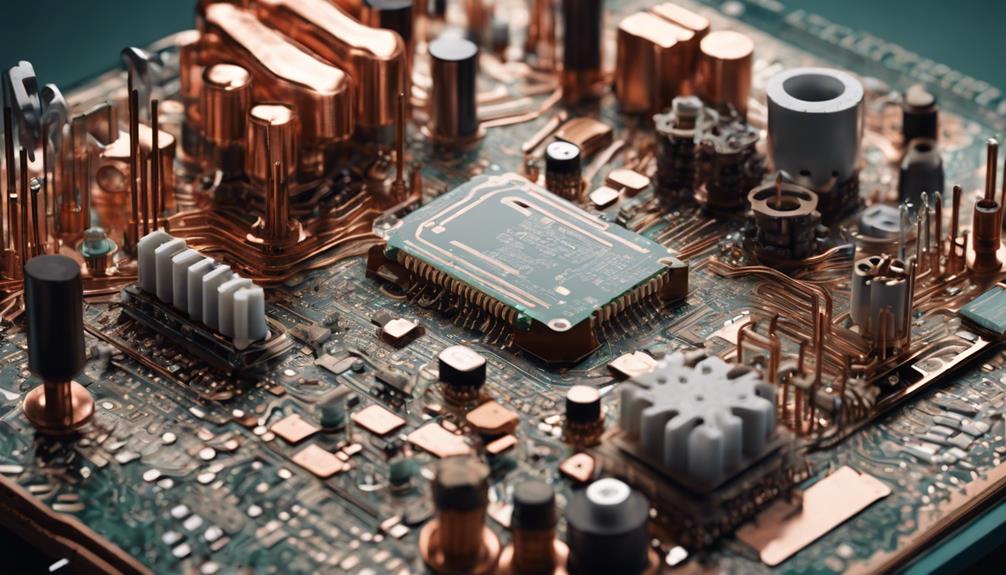
When examining the impact of materials on HDI cost, it is essential to take into account the expenses associated with specific components. These components include copper clad laminate, epoxy resin, and gold plating. The cost of these materials can greatly influence the overall manufacturing cost of HDI boards.
A thorough analysis of these material expenses is necessary to optimize HDI production costs.
Copper Clad Laminate Cost
The cost of copper clad laminate, a critical component in HDI board manufacturing, is greatly influenced by the type and quality of materials selected, which can substantially impact the overall production expenses. The choice of materials for copper clad laminate has significant implications for manufacturing costs, as high-grade materials like Isola FR408HR or Nelco N4000-13 SI can increase the cost. The material selection process involves balancing cost and performance, as materials with specific characteristics like dimensional stability and signal propagation properties impact the overall cost.
The following factors contribute to the cost implications of copper clad laminate:
- Material quality: High-grade materials with specific properties, such as dimensional stability, can increase the cost of copper clad laminate.
- Resin and substrate selection: The choice of resin and substrate materials can greatly influence the manufacturing costs of HDI boards.
- High-frequency application requirements: Materials with specific characteristics, such as signal propagation properties, are required for high-frequency applications, which can impact the cost of copper clad laminate.
Proper material selection is essential for achieving a balance between cost and performance when determining the copper clad laminate cost for HDI boards.
Epoxy Resin Expenses
Epoxy resin, a prevalent material in HDI board manufacturing, contributes significantly to the overall production expenses due to its diverse formulations and application-specific properties. The selection of epoxy resin has a substantial impact on the manufacturing costs of HDI boards.
Different resins, such as BT-Epoxy, polyimide, and cyanate ester, are chosen based on application requirements, affecting overall HDI board costs. For instance, materials like polyimide and PTFE resins are preferred for flexible and rigid-flex PCBs in high-frequency applications, influencing manufacturing expenses.
The addition of flame retardants to epoxy resin is also an important factor, as it reduces flammability in high-density circuit boards. The resin selection not only affects the cost but also the thermal stability and electrical properties of the HDI PCB.
Therefore, the choice of epoxy resin is pivotal in determining the overall manufacturing costs of HDI boards. By understanding the impact of epoxy resin on HDI board costs, manufacturers can optimize their material selection to minimize expenses and enhance the performance of their HDI boards.
Gold Plating Expenditures
Most importantly, the premium associated with gold plating in HDI board manufacturing greatly contributes to the overall production costs, primarily due to its exceptional conductivity and reliability.
The use of gold plating is essential in HDI boards for various reasons, including:
- Signal Integrity: Higher frequencies in HDI boards necessitate gold plating to guarantee signal integrity, which adds to the manufacturing expenses.
- Advanced Technology: The application of gold plating reflects the need for quality materials to meet advanced technology requirements, driving up manufacturing costs.
- Longevity and Reliability: Gold plating is preferred in HDI PCBs for its resistance to oxidation and corrosion, enhancing overall performance and ensuring the longevity and reliability of HDI boards.
While gold plating increases manufacturing costs, it is essential for guaranteeing the reliability and longevity of HDI boards.
The superior conductivity and reliability of gold plating make it an indispensable component in HDI board manufacturing, despite the added expense.
Role of Layers and Laminations
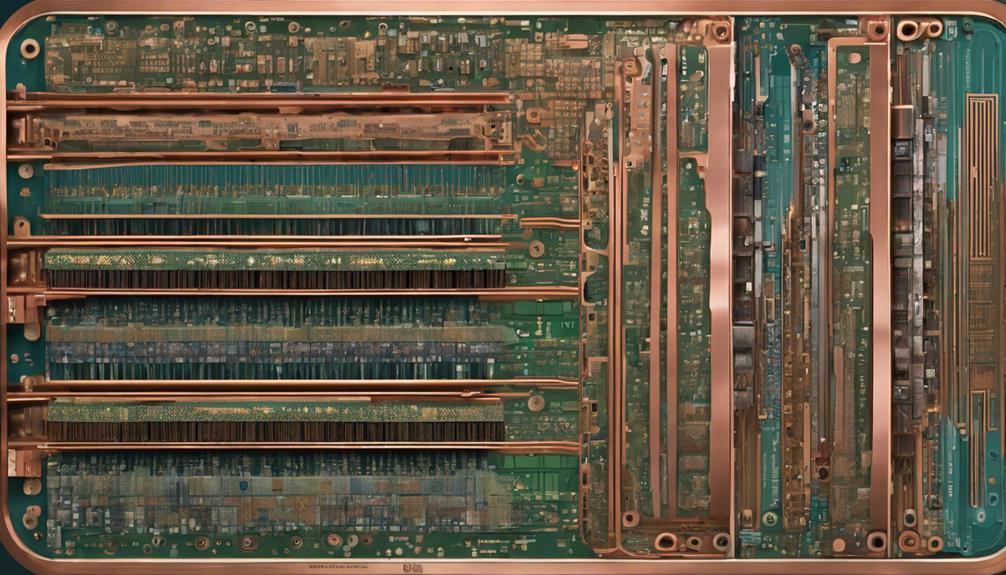
Layer count and lamination complexity are critical factors in HDI board manufacturing, as they have a profound impact on the overall production expense. The number of layers in HDI boards directly affects manufacturing costs, with higher layer counts resulting in increased expenses. Laminations, too, contribute greatly to manufacturing costs due to the complex layering process involved.
| Layer Count | Impact on Manufacturing Costs |
|---|---|
| Low (2-4 layers) | Lower costs due to simpler lamination process |
| Medium (6-8 layers) | Moderate costs due to increased lamination complexity |
| High (10+ layers) | Higher costs due to complex lamination process and material usage |
Optimizing laminations in HDI boards is essential for cost control. By reducing the number of layers required for the design, manufacturers can minimize costs. The choice of lamination materials and techniques also influences the overall cost of producing HDI boards. Efficient layer planning is vital to minimize costs and ensure cost-effective production of HDI boards.
Drill Methods and Cost Implications

As HDI board manufacturers seek to optimize production costs, the selection of drilling methods emerges as an essential factor, with laser drilling and mechanical drilling presenting distinct advantages and trade-offs.
When it comes to drilling methods, the choice between laser drilling and mechanical drilling depends on the specific requirements and scale of production. Laser drilling is preferred for key drilling in HDI PCBs due to its high precision and consistency. In contrast, mechanical drilling, while more economical, is typically used for through-holes in HDI PCB fabrication.
Here are three key considerations for selecting the most suitable drilling method:
- Precision and Consistency:
Laser drilling offers higher precision and consistency, making it ideal for complex HDI PCB designs.
- Cost Implications:
Switching to laser drilling can save direct production costs by offering higher speed and precision, but may require significant upfront investment.
- Scale of Production:
The choice between mechanical and laser drilling depends on the scale of production, with laser drilling being more suitable for high-volume production.
Proper selection of drilling technology is essential for optimizing HDI PCB manufacturing costs. By understanding the advantages and trade-offs of each drilling method, manufacturers can make informed decisions that drive cost savings and efficiency.
Advanced Lamination Techniques Costs

The incorporation of advanced lamination techniques, including sequential laminations, into HDI board manufacturing processes can substantially escalate production costs due to the complexities and precision requirements involved. The number of laminations is a significant factor, as each additional layer increases manufacturing expenses.
Additionally, implementing complex lamination structures, such as blind and buried vias, drives up costs further. The use of high-tech materials, including specialized resins and substrates, also contributes to the overall cost of HDI board fabrication. Precision lamination processes, essential for meeting fine line and space requirements, incur additional manufacturing expenses.
As a result, the adoption of advanced lamination techniques can significantly raise the manufacturing costs of HDI boards. The cumulative effect of these factors can lead to substantial cost increases, making it essential for manufacturers to carefully consider the cost implications of their design choices.
Laser Drilling and Microvias Expenses
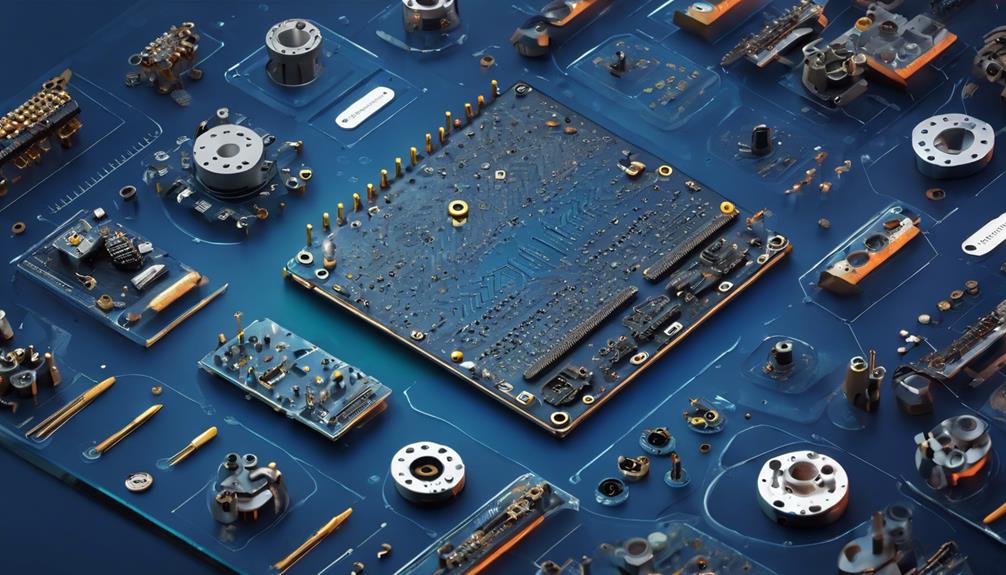
In addition to advanced lamination techniques, the adoption of laser drilling technology for microvias in HDI boards also greatly contributes to the overall manufacturing cost. This technology is favored for its high precision and consistency in production, making it an attractive option for certain applications.
The choice between mechanical and laser drilling greatly impacts the overall cost of HDI board fabrication. Key factors to take into account are:
- Cost-effectiveness: Mechanical drilling is more cost-effective for through-holes, while laser drilling offers efficiency for key drilling needs.
- Precision and speed: Laser drilling in HDI PCB manufacturing can save on direct production costs due to its precision and high-speed processing capabilities.
- Hole filling techniques: Proper hole filling techniques in laser-drilled microvias are essential for forming good solder joints and ensuring efficient functionality.
The advantages of laser drilling in HDI board production are undeniable, particularly in applications where precision and consistency are paramount. By understanding the benefits and trade-offs of laser drilling and microvias, manufacturers can optimize their production processes and minimize manufacturing costs.
Conductive Fill Materials Cost Analysis

Conductive fill materials, an essential component in high-density interconnect (HDI) board fabrication, greatly impact the overall manufacturing cost due to their diverse material properties and prices. The choice of conductive fill materials, such as copper, silver, or conductive epoxies, depends on factors like electrical conductivity requirements and cost considerations.
Silver-based conductive fill materials, for instance, are more expensive than copper fill materials, greatly affecting the cost analysis. These materials are crucial for filling vias in HDI boards to guarantee proper electrical connections and reliable interconnections in high-density PCBs.
The cost of conductive fill materials contributes significantly to the overall manufacturing costs of HDI boards. A thorough cost analysis is necessary to determine the most cost-effective conductive fill material for a specific HDI board design.
Yield and Profit in HDI Manufacturing
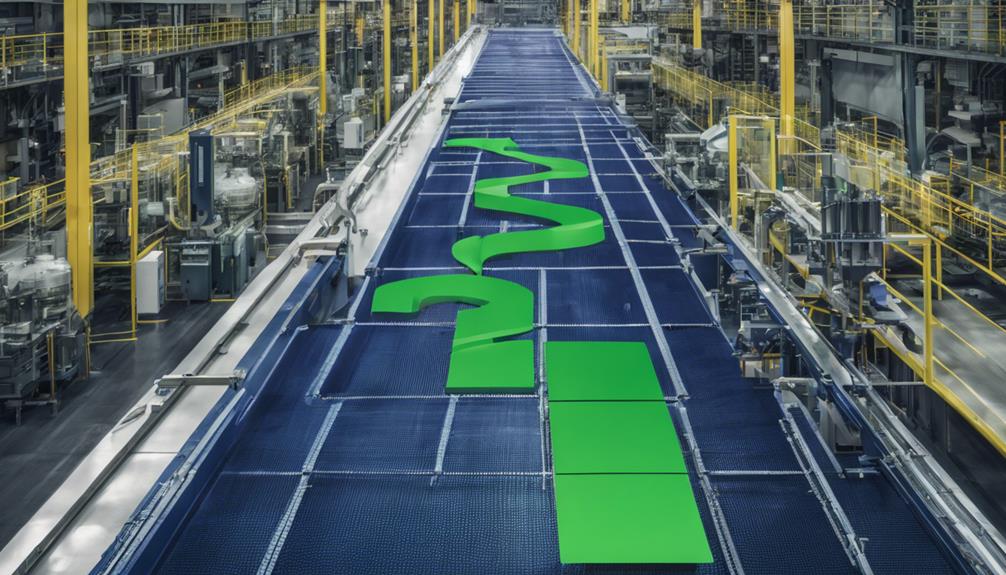
Optimizing yield in HDI manufacturing is pivotal to maximizing profit margins, as even minor enhancements in production efficiency can greatly impact a manufacturer's bottom line.
Evaluating yield optimization is vital for maximizing profit in HDI manufacturing, and factors like material selection and drilling techniques play a significant role in achieving cost-effectiveness.
To improve manufacturing yield and profitability, manufacturers can focus on the following key areas:
- Material selection: Balancing cost considerations with material quality is essential for achieving the best yield in HDI PCB manufacturing.
- Resin selection and via structure design: Proper selection of resin and via structure design can contribute to higher manufacturing yield and reduced manufacturing costs.
- Drilling techniques: Optimizing drilling techniques can minimize defects and improve overall yield, leading to increased profitability.
Frequently Asked Questions
What Is the Price of HDI PCB Board?
The price of an HDI PCB board varies depending on several factors, including the number of layers, material quality, and specialized stack-ups. Advanced technologies, such as precision drilling and high-frequency materials, can have a substantial impact on the cost.
Utilizing online price calculators and providing detailed product information can help estimate accurate manufacturing costs. On average, HDI PCBs can range from $50 to $500 or more per unit, depending on the complexity and quantity of the order.
What Is the Material of HDI Pcb?
When crafting a high-performance HDI PCB, material selection is paramount. Consider the analogy of a master chef, where the right ingredients make all the difference. Similarly, HDI PCB materials like epoxy resin, polyimide, and PTFE are chosen for specific applications, impacting cost, thermal stability, and electrical properties.
For instance, high-frequency applications may require materials like Isola FR408HR or Nelco N4000-13 SI, which offer superior electrical performance and thermal stability.
What Is the Cost of FR4 PCB per Square Inch?
The cost of FR4 PCB per square inch typically ranges from $0.10 to $0.30 for standard 2-layer boards, depending on material thickness, copper weight, and surface finish.
Complexity of the PCB design, such as fine trace width or high-density components, can influence the cost per square inch.
Consulting with PCB manufacturers and providing detailed design specifications can help determine the exact cost of FR4 PCBs per square inch.
What Is HDI Material?
HDI material refers to specialized high-density interconnect substrates employed in HDI PCB manufacturing. These materials are chosen for their exceptional performance characteristics, including low dissipation factor and dielectric constant. Thoughtful selection is vital to guarantee signal integrity, reliability, and manufacturability.
Factors such as dimensional stability, machinability, and resistance to multiple laminations influence HDI material choices.
